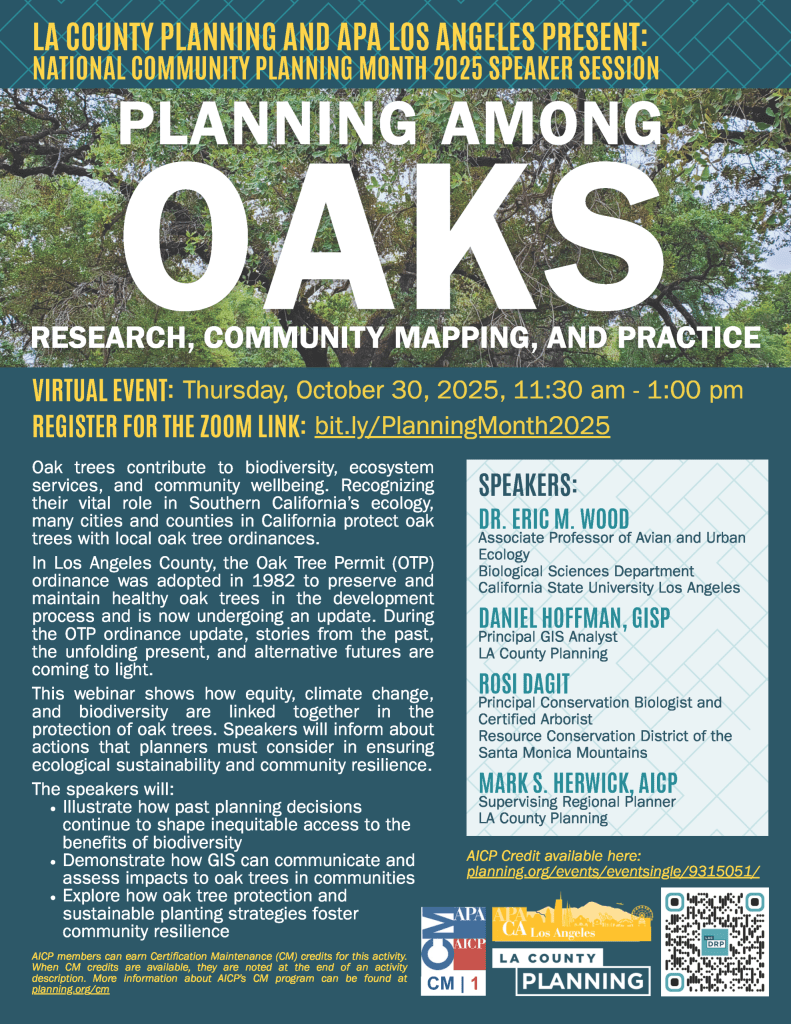Community Planning Month Speaker Panel – Planning Among Oaks, October 30, 11:30am ZOOM

Registration link bit.ly/PlanningMonth2025
Oak trees contribute to biodiversity, ecosystem services, and community wellbeing. Recognizing their vital role in Southern California’s natural ecology, many local cities and counties in California protect oak trees with local oak tree ordinances. In Los Angeles County, the Oak Tree Permit (OTP) ordinance was adopted in 1982 to preserve and maintain healthy oak trees in the development process and is now undergoing an update. During the OTP ordinance update, stories from the past, from the unfolding present, and alternative futures came to light.
This webinar shows how equity, climate change, and biodiversity are linked together in the protection of oak trees. It informs actions that planners must consider in ensuring ecological sustainability and community resilience. The presenters illustrate past planning actions that structured inequitable access to the benefits of biodiversity; 2) demonstrate the use of GIS in assessing impacts to oaks; and 3) explore the ways that oak tree protection and sustainable planting strategies foster community resilience.
Dr. Eric M. Wood will share how past planning actions such as redlining have lasting impacts, shaping the distribution of native trees such as oaks and biodiversity in Los Angeles County.
Daniel Hoffman will share how amid the California Board of Forestry’s Zone 0 rulemaking, LA County Planning’s GIS team performed a geospatial impact analysis and made maps and other data modeling Zone 0 impacts on oak trees and other vegetation available to the public via LA County’s new Tree Hub.
Rosi Dagit will share how planting oak trees that will outlive us is one tangible and real action available to us in the face of myriad of problems facing our planet. Planting oak trees in the right places where they have a chance to live long lives can contribute to bolstering wildfire resilience, improving habitat connectivity, and enhancing climate adaptation for future generations.
Mark S. Herwick, AICP, will comment on the relationships between planning practices and outcomes that differentially affect racial groups and how these relationships have changed over time. Attention will be paid to the iterative and changing nature of planning practice, which has responded to critical self-reflection and federal, state and local equity policy initiatives. This framework will be applied to oak trees and policy actions intended to protect them as well as add community benefit.





